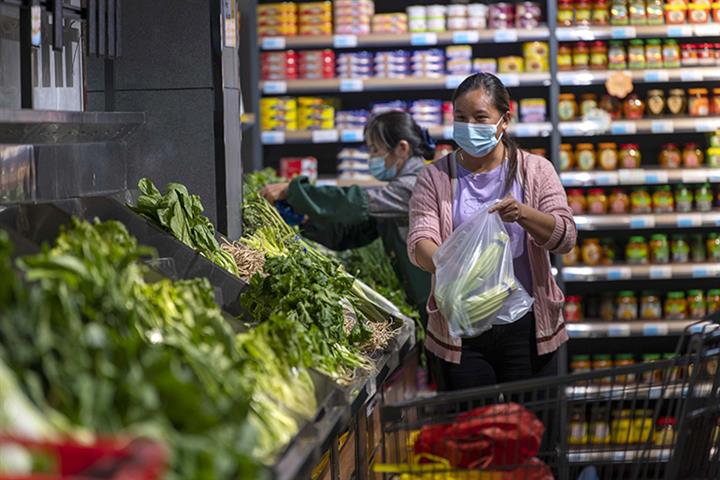 China’s Factory Prices End Nearly Two-Year Surge Amid Soft Demand
China’s Factory Prices End Nearly Two-Year Surge Amid Soft Demand (Yicai Global) Nov. 9 -- China's producer price index, a gauge of factory-gate prices, has fallen into deflation territory in October for the first time since January 2021 along with lower-than-expected consumer price inflation.
The PPI declined by 1.3 percent from a year earlier, completing 11 months of slowing growth after climbing still by 0.9 percent in September, according to data released by the National Bureau of Statistics today. Producers' price cuts for distributors were bigger than predicted as chief economists polled by Yicai Global expected the index to move down by 1.16 percent last month.
The consumer price index, which signals inflation of consumer goods, rose by 2.1 percent from a year ago, lower than chief economists' average forecast of 2.39 percent. In September, the pace of CPI growth had been quicker at 2.8 percent.
In the short term, there is still no risk of deflation, Pang Ming, chief economist at Jones Lang LaSalle China, told Yicai Global. However, considering the high base of last year, the core CPI was weak and the PPI dropped so that proves that China’s consumer demand and overseas demand are sluggish, he added.
China should work on both supply and demand, adhere to a high level of opening up, and effectively boost the potential of domestic demand, Pang suggested.
Food prices maintained high growth, driven by pork prices, while non-food prices remained low, mainly due to regional Covid-10 outbreaks in October, which dragged down service recovery, CITIC Securities said.
Pork prices soared nearly 52 percent from a year ago, after moving up by 36 percent in September, prompting prices of eggs and poultry to also rise, based on the NBS data. Non-food prices climbed 1.1 percent, slowing the pace of climbing. A boost in service prices slowed from a month earlier.
Despite the factory price slumps, some industries still increased their demand. International oil and copper prices fell in October, according to a research report by China International Capital. Coal prices also went down after a peak season, while iron prices rebounded due to strong infrastructure and property guarantee policies. But last year, there was a shortage of coal power, so the base was high and consequently, the PPI boost was subdued last month, it added.
Although the PPI may decline in the short term, some raw material prices are still very high and cost pressures on middle and downstream enterprises, especially small ones, are still prominent, said Wang Qing, chief macro analyst at Orient Golden Ratings.
Next, policymakers need to continue to maintain supply and stabilize prices while releasing some production capacity of key materials to stimulate the vitality of market players, Wang added.
Editor: Emmi Laine, Xiao Yi